


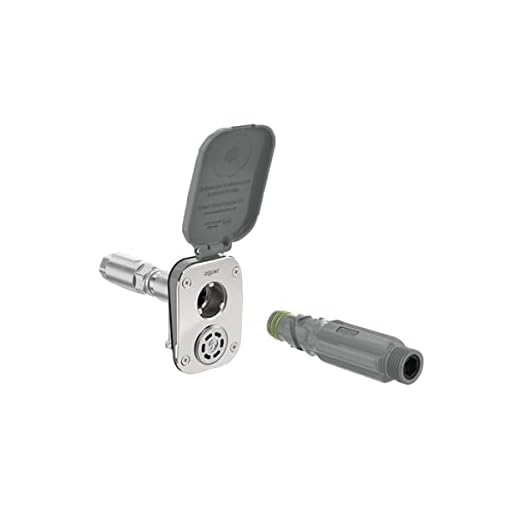
Before you begin, always select the appropriate nozzle for your task. Different nozzles provide various spray patterns and pressures, enabling better results across surfaces. For instance, a 25-degree nozzle is ideal for cleaning patios and driveways, while a 0-degree nozzle concentrates the jet for tough stains on sturdy materials.
Prior to tackling any project, clear the area of obstacles and debris. This ensures safety and addresses potential hazards. Your workspace should be tidy, allowing for unencumbered manoeuvres during operation.
Adopting the correct stance while operating is crucial. Stand at a safe distance from the surface to prevent damage, and always maintain a firm grip on the equipment. Position yourself at a slight angle, directing the spray towards the lower part of the surface first, gradually moving upwards. This method effectively lifts dirt away without oversaturating any area.
Water temperature plays a significant role in enhancing cleaning effectiveness. Utilising hot water may yield superior results for grease and oil stains, as it aids in loosening stubborn substances. However, ensure your equipment is rated for hot water use before proceeding.
After cleaning, undertake regular maintenance of the machine. This includes checking hoses for leaks, cleaning the filter, and inspecting the nozzle for blockages. Such preventative measures ensure longevity and optimal performance.
Always apply detergent at low pressure to avoid sudden bursts that can damage surfaces. Give it time to penetrate before rinsing at higher pressure for optimum cleanliness. Use this principle to your advantage, making it a routine for all deep cleaning tasks.
Selecting the Right Equipment for Your Task
For outdoor cleaning, matching the power of the machine to the job is crucial. For light tasks such as washing cars or garden furniture, a model with 1200 to 1500 PSI will suffice. However, if you’re tackling heavy-duty tasks like cleaning patios or driveways, look for units with 2500 PSI or more.
The type of motor also matters. Electric models are quieter and better for smaller tasks, while gas-powered ones deliver higher performance and mobility for extensive jobs.
Nozzles play a pivotal role in versatility. I recommend having a unit with adjustable nozzles. A 0-degree nozzle provides concentrated power for stubborn stains, while a 25-degree option works well for general cleaning.
Additionally, consider the size of the cleaning surface. For larger areas, selecting a machine that offers a wider cleaning path will cut down on time. A model with an adjustable wand can also enhance your reach and efficiency.
Don’t overlook the flow rate; it’s measured in litres per minute (LPM). Higher flow rates improve rinsing capabilities, essential for stubborn dirt and grime.
Lastly, weigh the features against your budget. Expensive models may come with extra capabilities, but a reliable mid-range choice can often meet typical demands effectively. Always evaluate warranties as well; a longer guarantee often reflects manufacturer confidence in their equipment.
Understanding Nozzles and Their Uses
Choosing the appropriate nozzle can significantly enhance your cleaning results. Each attachment alters the angle and intensity of the water stream, targeting different surfaces and types of grime. Familiarising yourself with these options is paramount.
The zero-degree nozzle delivers a concentrated stream, making it ideal for tough stains on resilient surfaces such as concrete or brick. I recommend using this for stubborn marks like oil or rust but advise caution as it can easily damage softer materials.
A 15-degree option broadens the spray angle, providing a powerful cleaning solution for surfaces like decks or driveways. This angle strikes a balance between power and coverage, effectively removing dirt and mildew without risking damage.
The 25-degree nozzle is versatile, suitable for most household tasks, including patios, vehicles, and outdoor furniture. It offers ample cleaning power while being gentler on more delicate surfaces.
For washing cars or windows, the 40-degree nozzle proves most effective. Its wide spray pattern reduces pressure, preventing scratches on surfaces and ensuring a clean finish without damaging paintwork or glass.
In addition, some units feature a soap nozzle intended for applying cleaning solutions. Employ this when tackling heavy soil or for pre-treatment on particularly dirty areas, enhancing the overall cleaning efficacy.
Finally, consider the colour coding of nozzles. Commonly, manufacturers adhere to a standard: red for zero-degree, yellow for 15-degree, green for 25-degree, and white for 40-degree. This system simplifies the selection process, making it easier for users to identify the best tool for their specific tasks.
Preparing the Surface for Pressure Washing
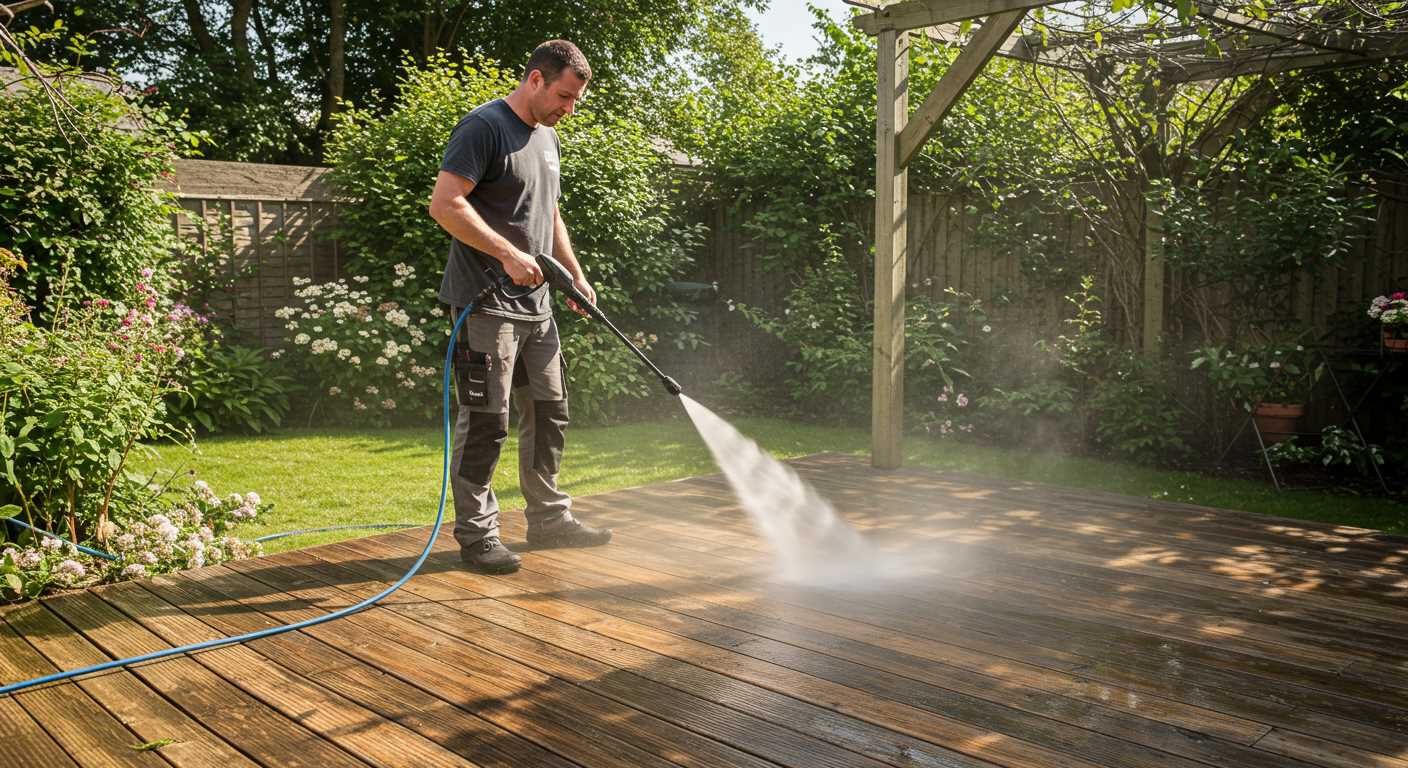
Clear the area of any furniture, plants, or obstacles that may interfere with cleaning. Removing these items helps ensure safety and prevents damage during the task.
Inspect the surface for any loose debris, such as leaves, dirt, or stones, and sweep it away. Ensuring the area is free from foreign materials allows for an efficient and effective cleaning process.
If dealing with delicate surfaces like wood or painted areas, inspect for any signs of wear, chipping, or peeling. Addressing these issues ensures the exterior won’t be further damaged by the high water force.
For driveways or paths, check for oil stains or grime. Pre-treat severe stains with a suitable cleaning solution, allowing it to sit for the recommended time before proceeding with washing. Being proactive with stain removal saves time later.
Consider the surrounding environment–cover nearby plants and delicate items with tarps if there is a risk of overspray. Protecting these elements maintains the integrity of your outdoor space.
Always take note of any leaks or cracks in surfaces. Filling these with appropriate fillers not only enhances the aesthetic but also prevents water from seeping into unwanted areas during the cleaning process.
Lastly, establish a plan for water drainage to avoid pooling or flooding, which could undermine your efforts. Ensuring proper slope and drainage routes enhances the outcome of the entire task.
Safe Operating Practices While Pressure Washing
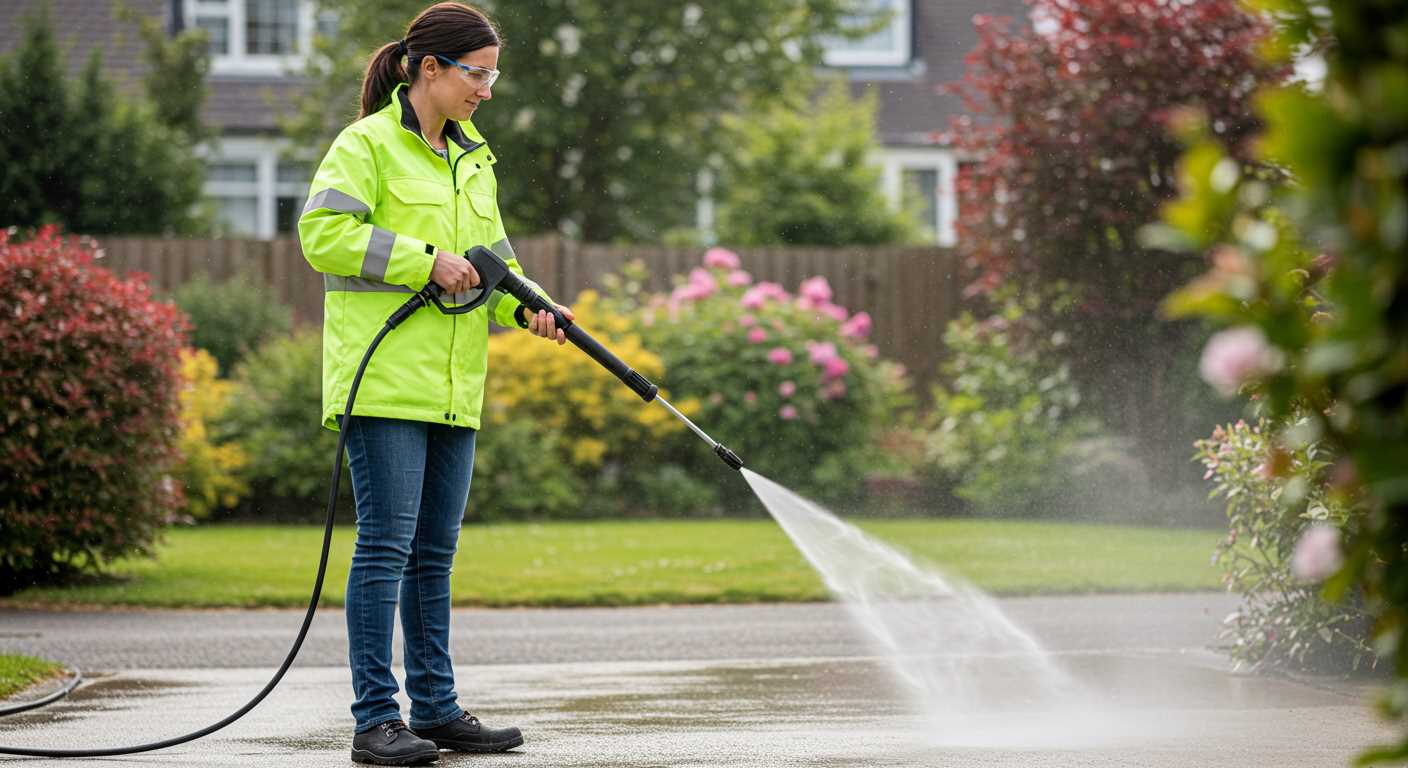
Always wear appropriate personal protective equipment (PPE). This includes safety goggles, gloves, and sturdy footwear to shield against debris and high-pressure water. Long sleeves and trousers are advisable to protect your skin from potential spray and chemical exposure.
Maintain a safe distance from the surface you intend to clean. Keeping a minimum distance of 2-3 feet helps prevent damage to the surface and reduces the risk of injury. Gradually adjust your distance based on the surface type and pressure settings.
Engage the trigger lock when not actively spraying. This prevents accidental activation, which could lead to injuries. Always direct the nozzle away from yourself and others while setting up or adjusting the equipment.
Inspect equipment before each use. Check hoses, nozzles, and connections for leaks or damage. Address any faults before operation to ensure both safety and efficiency. Regular maintenance extends the longevity of your machine.
Never point the nozzle at people, pets, or fragile objects. High-velocity water can cause severe harm. Ensure bystanders maintain a safe distance while you operate the equipment.
Stay alert and avoid distractions. Operating the machinery requires your full attention. If you need to talk or require assistance, pause the task to prevent accidents.
Use the correct cleaning agents as recommended by the manufacturer. Some surfaces may be sensitive to specific chemicals, leading to damage or ineffective cleaning. Always dilute concentrate according to guidelines.
Keep a first aid kit accessible. Injuries may occur, and having supplies on hand can provide immediate care if needed.
Lastly, if you encounter power lines or overhead obstructions, maintain a substantial distance. Water can carry electricity, creating hazardous conditions.
Cleaning Different Surfaces with a Pressure Washer
For effective cleaning, adjust the intensity depending on the surface material. For concrete driveways or patios, employ a higher pressure setting (around 2500-3000 psi) to lift tough stains like oil and grime. Maintain a distance of approximately 12 inches to avoid damaging the surface.
Wooden Decks and Fencing
When tackling wooden structures, select a low setting (around 1200-1500 psi) combined with a wide nozzle. This prevents splintering and preserves the wood’s integrity. Always angle the spray to follow the wood grain, ensuring a thorough clean without causing harm.
Cars and Vehicles
For vehicles, I recommend a gentle approach using a low pressure (around 1200 psi). Equip the wand with a soap nozzle to apply a suitable cleaner before rinsing off. Maintain a safe distance of 2-3 feet from the surface to avoid damaging the paintwork. After cleaning, rinse thoroughly to remove any residue.
Maintaining Your Cleaning Equipment for Longevity
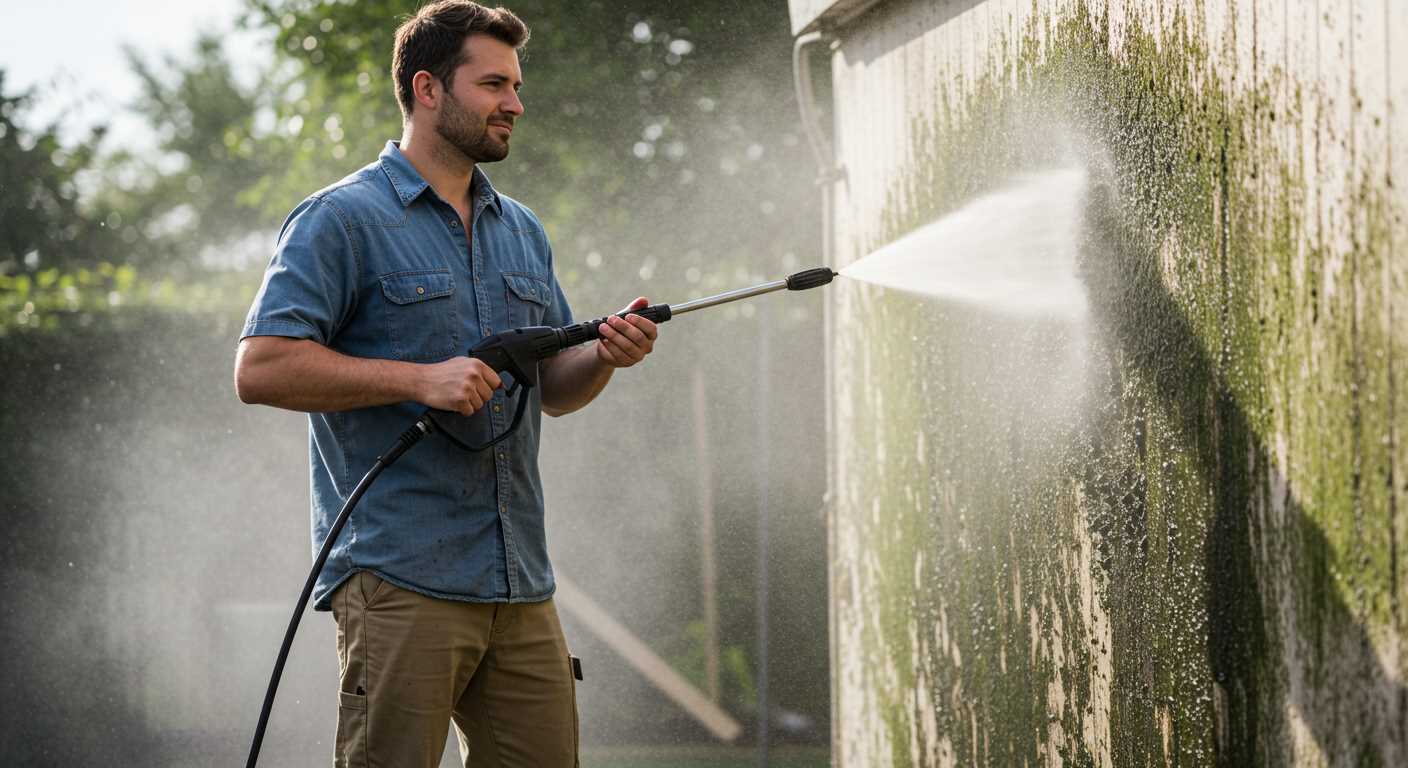
Regular upkeep is vital for extending the lifespan of your cleaning equipment. Start by keeping all components clean and free from debris. After each session, rinse the nozzle and hoses to prevent clogs.
Lubrication and Inspections
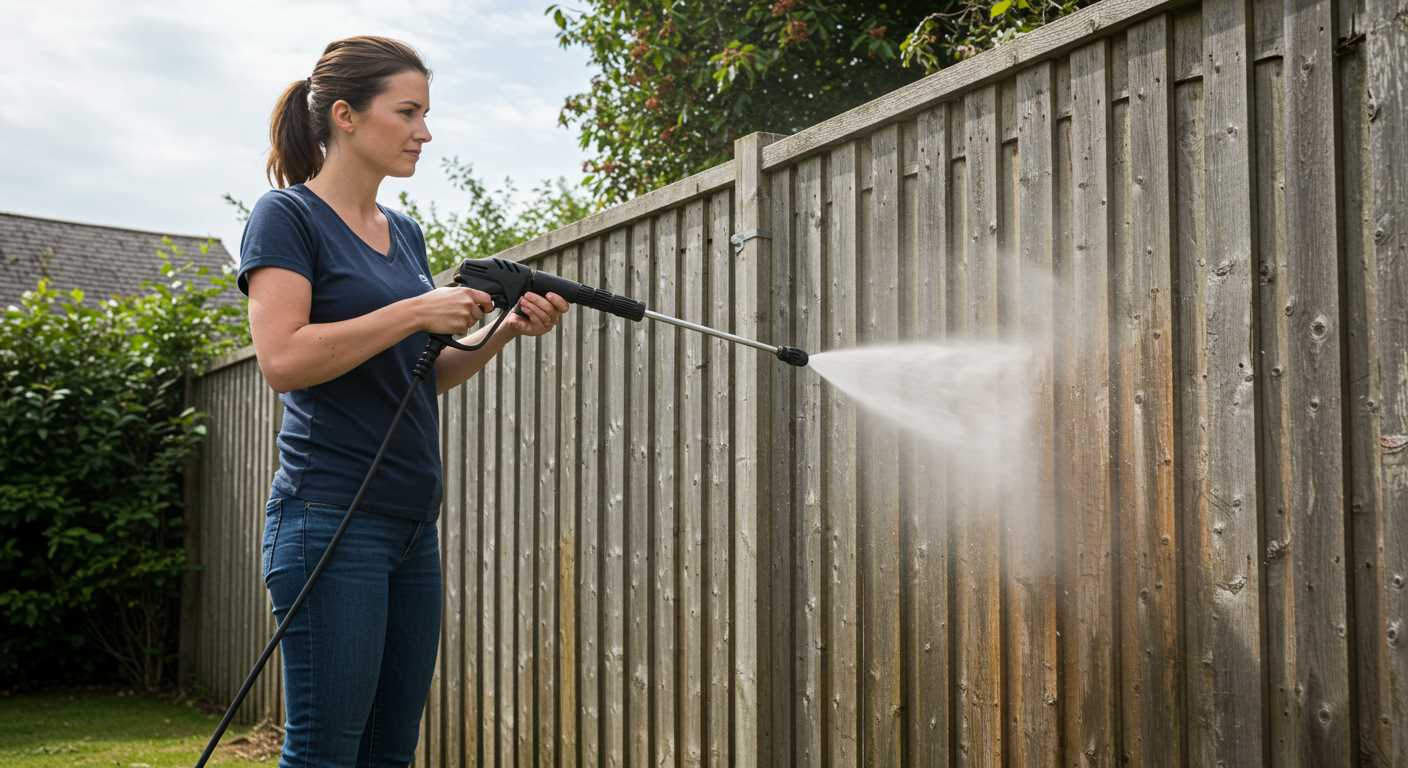
- Check the oil level frequently if your unit is gas-powered. Change it according to the manufacturer’s guidelines or every 50 hours of operation.
- If electric, inspect power cords and connections for wear and tear. Replace damaged parts immediately.
- Lubricate any moving parts as indicated in the user manual. This can include pumps and other mechanical elements.
Winterizing Your Equipment
Preparing for colder months is essential. Here’s what I do:
- Drain all water from the unit to prevent freezing. Use compressed air if necessary to remove moisture from the hoses.
- Add a pump protector or antifreeze designed for cleaning devices to safeguard internal components.
Storing the equipment properly also plays a crucial role. Keep it in a dry, sheltered space where temperature changes are minimal. An environment like this helps avoid corrosion and damage.
By following these straightforward measures, I’ve ensured my cleaning devices remain reliable and efficient for many years.
Common mistakes to avoid when using a pressure cleaner
Avoiding the wrong nozzle for the task is paramount. Each attachment has a specific purpose; using an incorrect one may damage delicate surfaces. Use a wide fan spray for rinsing large areas and a narrow jet for tough stains.
Neglecting to inspect the surroundings can lead to accidental damage. Clear the area of breakables, and consider the direction of the water spray to prevent unwanted splashes onto unintended surfaces, especially windows and delicate plants.
Incorrect distance from the surface
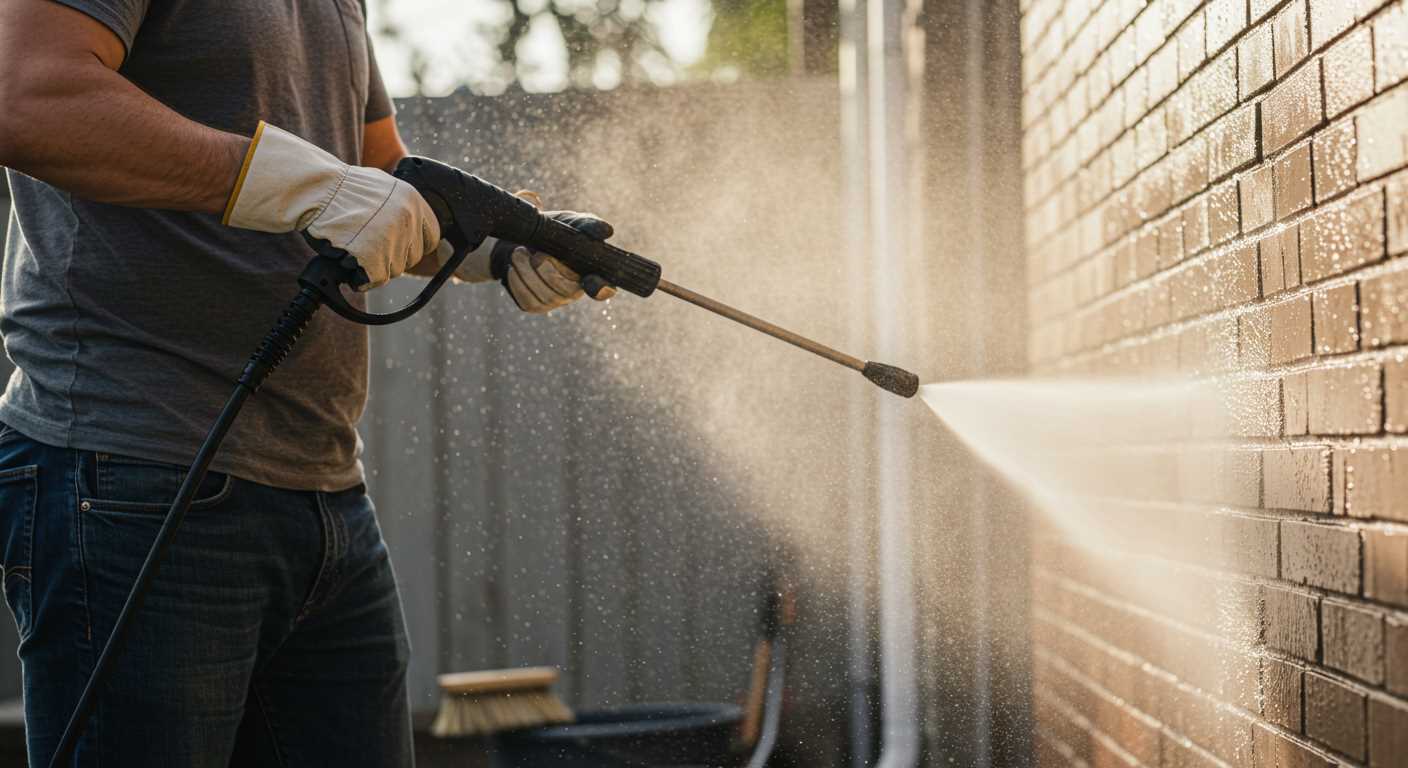
Maintaining an appropriate distance from the surface is critical. Standing too close can cause surface damage, while being too far may yield unsatisfactory results. Typically, a distance of 2 to 3 feet is ideal for most cleaning tasks, but always adjust according to the material being cleaned.
Ignoring safety gear
Overlooking protective gear can result in injuries. Always wear safety goggles to protect your eyes from flying debris and heavy-duty gloves to prevent skin irritation. Steel-toed boots will also provide foot protection from heavy equipment and stones.
| Mistake | Consequence | Solution |
|---|---|---|
| Using the wrong nozzle | Surface damage | Match nozzle to task |
| Not inspecting surroundings | Damage to property | Clear area before starting |
| Incorrect distance | Poor cleaning results | Keep 2-3 feet away |
| Ignoring safety gear | Injury | Wear goggles and gloves |
Failure to prepare suitable cleaning solutions is another frequent error. Ensure to use the correct detergents for your equipment. Avoid using household cleaners not designed for high-pressure applications, as they may cause adverse reactions within the system.
Lastly, neglecting maintenance can lead to reduced performance over time. Regularly check hoses and connections for wear, clean the filter, and ensure the oil is topped up to maintain optimal function.
FAQ:
What safety precautions should I take before using a pressure washer?
Before operating a pressure washer, it’s important to prioritise safety. First, wear appropriate protective gear, including goggles, gloves, and sturdy footwear to prevent injuries. Ensure that the area around you is clear of obstacles, pets, and people who might be affected by the high-pressure water. Additionally, check the power cord and water supply hoses for any damage before starting. If you are using a gas-powered model, always operate it outdoors to avoid exposure to harmful fumes.
What type of detergent should I use with my pressure washer?
Using the right detergent is crucial for achieving good results. Choose a detergent that is specifically formulated for pressure washers, as these are designed to foam and rinse off easily without leaving residue. You can find options for various cleaning tasks, including those suitable for surfaces like wood, concrete, and vehicles. Be sure to follow the manufacturer’s recommendations for dilution and application to ensure effective cleaning without damaging surfaces.
How do I determine the right PSI for different cleaning tasks?
The appropriate pounds per square inch (PSI) setting can vary depending on the surface you are cleaning. For delicate tasks like washing cars or cleaning painted surfaces, a lower PSI of around 1200 to 1900 is suitable. For tough surfaces like concrete driveways or drive-thrus, you might need a higher PSI, typically between 2500 and 3000. Always consult the pressure washer’s manual for guidance on setting the right pressure based on your specific cleaning needs.
Can I use my pressure washer to clean my roof?
Using a pressure washer on a roof requires careful consideration. While it can effectively clean dirt and debris, the force of the water may damage shingles or tiles if not used correctly. It is advisable to use a lower PSI setting and maintain a safe distance from the roof surface. Furthermore, using a spray pattern that widens out can help reduce the intensity of the water stream. If you’re unsure, it might be best to hire a professional to prevent any potential damage.
How often should I clean surfaces with a pressure washer?
The frequency of cleaning surfaces with a pressure washer largely depends on the type of surface and its exposure to elements. For instance, patios and driveways may benefit from seasonal cleaning to remove grime and prevent moss growth. Wooden decks typically require cleaning at least once a year, while vehicles can be cleaned every few weeks to maintain their appearance. Always assess the condition of the surface and adjust your cleaning schedule accordingly, taking into account any visible dirt or build-up.








